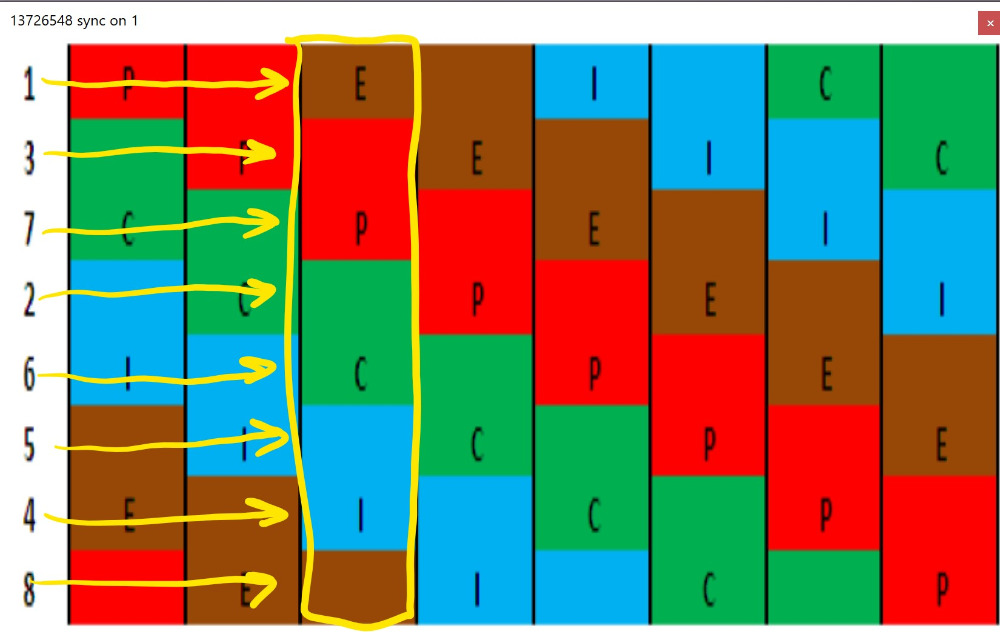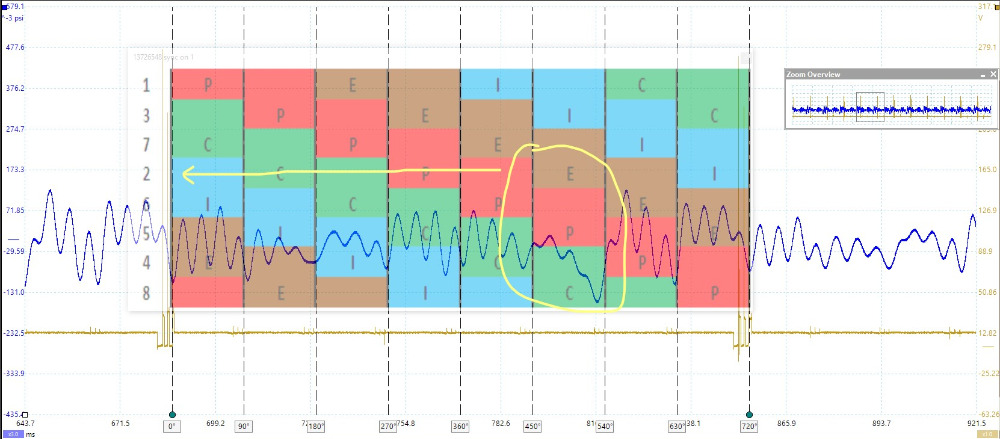*** Restricting New Posts to SD Premium Members ONLY *** (09 May 2025)
Just made a new account? Can't post? Click above.
A place to discuss hardware/software and diagnostic procedures
Piston chart
- Denkramer
-
Topic Author
- Offline
- New Member
-

Less
More
- Posts: 2
- Thank you received: 0
5 years 4 weeks ago #43213
by Denkramer
Piston chart was created by Denkramer
Good evening, I am trying to find information on how to read a piston chart. Any help will be good,
Please Log in or Create an account to join the conversation.
- Chad
-

- Offline
- Moderator
-

- I am not a parts changer.
Less
More
- Posts: 2120
- Thank you received: 708
5 years 4 weeks ago - 4 years 8 months ago #43218
by Chad
"Knowledge is a weapon. Arm yourself, well, before going to do battle."
"Understanding a question is half an answer."
I have learned more by being wrong, than I have by being right.
Replied by Chad on topic Piston chart
A piston chart helps us determine what position any given cylinder/piston is, in the 4-stroke cycle. It is used in conjunction with a "Sync". The "sync" is a signal that will mark the location of one cylinder. For example, an Ignition Firing event. Ignition Firing events happen VERY closely to TDC. So, If we mark the Ignition Firing Event of cylinder #1, we have essentially marked the TDC position of cylinder #1. If we mark two consecutive (same cylinder), Firing events, then we have marked out 720° of Crank rotation. 4-Strokes. A piston chart is placed in between these two "Sync" marks.
This is the top line (one cylinder) of a 4 cylinder piston chart. It is divided into 4 colors. Each color is 180° of crank rotation, representing one of the four strokes. P = Power, E = Exhaust, I = Intake, C = Compression.
This is the top line of a 6 cylinder piston chart. It, too, is divided into 4 colors, 180° each. But, it also shows, 6 partitions.
Top line of an 8 cylinder piston chart:
Now, let's plug in the Firing Order and bring in the rest of the chart.
Looking at the yellow box, we are 180° after TDC of Cylinder #1. Cylinder #1 is beginning its EXHAUST stroke. At the same time:
Cylinder #3 is halfway through its POWER stroke.
Cylinder #7 is beginning its POWER stroke.
Cylinder #2 is halfway through its COMPRESSION stroke.
Cylinder #6 is beginning its COMPRESSION stroke.
Cylinder #5 is halfway through its INTAKE stroke.
Cylinder #4 is Beginning its INTAKE stroke.
Cylinder #8 is halfway through its EXHAUST stroke.
Lay this over a tailpipe pressure waveform, for example, and you can see what position any cylinder is in, at any point in the waveform.
This image shows a misfire on Cylinder #2. You can see the exhaust pressure dive, as the #2 exhaust valve opens, indication of a misfire.
We can, also, see that during cylider #2 COMPRESSION stroke, Exhaust pressure is elevated, indicating Exhaust valve leakage.
This "fish-bite" misfire could be felt, but flagged no codes, or misfire counters.
Here are links to a couple different Piston Chart generators:
driveabilityguys.com/software-and-tools
www.microsoft.com/en-us/p/pressure-wavef...ab=pivot:overviewtab
This is the top line (one cylinder) of a 4 cylinder piston chart. It is divided into 4 colors. Each color is 180° of crank rotation, representing one of the four strokes. P = Power, E = Exhaust, I = Intake, C = Compression.
This is the top line of a 6 cylinder piston chart. It, too, is divided into 4 colors, 180° each. But, it also shows, 6 partitions.
Top line of an 8 cylinder piston chart:
Now, let's plug in the Firing Order and bring in the rest of the chart.
Looking at the yellow box, we are 180° after TDC of Cylinder #1. Cylinder #1 is beginning its EXHAUST stroke. At the same time:
Cylinder #3 is halfway through its POWER stroke.
Cylinder #7 is beginning its POWER stroke.
Cylinder #2 is halfway through its COMPRESSION stroke.
Cylinder #6 is beginning its COMPRESSION stroke.
Cylinder #5 is halfway through its INTAKE stroke.
Cylinder #4 is Beginning its INTAKE stroke.
Cylinder #8 is halfway through its EXHAUST stroke.
Lay this over a tailpipe pressure waveform, for example, and you can see what position any cylinder is in, at any point in the waveform.
This image shows a misfire on Cylinder #2. You can see the exhaust pressure dive, as the #2 exhaust valve opens, indication of a misfire.
We can, also, see that during cylider #2 COMPRESSION stroke, Exhaust pressure is elevated, indicating Exhaust valve leakage.
This "fish-bite" misfire could be felt, but flagged no codes, or misfire counters.
Here are links to a couple different Piston Chart generators:
driveabilityguys.com/software-and-tools
www.microsoft.com/en-us/p/pressure-wavef...ab=pivot:overviewtab
"Knowledge is a weapon. Arm yourself, well, before going to do battle."
"Understanding a question is half an answer."
I have learned more by being wrong, than I have by being right.
Last edit: 4 years 8 months ago by Chad.
The following user(s) said Thank You: Noah, juergen.scholl, Denkramer, matthew.miller
Please Log in or Create an account to join the conversation.
Time to create page: 0.315 seconds






